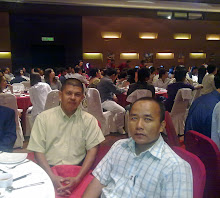Tuesday, 14 June 2011
Research
The World Gold Council conducts research into the existing and emerging
technology related markets for gold. Technology related uses of gold in
industrial applications, including electronics, dentistry, medicine and
nanotechnology, account for around 12% of gold demand (an annual
average of over 434 tonnes from 2005 to 2009). Our market intelligence
and insights allow us to develop technologies and support markets in a
way that protects, strengthens and expands the role gold plays in
industrial applications.
2010 was a record year for gold demand in electronics at 328 tonnes. As a result of the growth of the consumer electronics market, long term annual consumption of gold in electronics is increasing, with the continuing push for cost reduction a major driver of the electronics industry.
The unique properties of gold nanoparticles are leading to its use in a growing number of applications within this field. For example, gold is an active catalyst for many commercially important reactions. A catalyst is a substance or material that accelerates the rate of a chemical reaction without itself being consumed by the reaction. Catalysts are an essential component of many different industrial processes used to produce chemicals and foodstuffs. They also provide solutions to controlling emissions from industrial processes and vehicles.
We are witnessing an explosion of interest in the use of gold throughout science and technology. Exciting breakthroughs are regularly reported from some of the world’s leading academic and industrial institutions. New sources of demand for gold are likely as it takes a key role in advanced technologies such as novel medical diagnostics, water purification, and solar cells.
The World Gold Council sponsored science journal, Gold Bulletin, reviews and publishes ground-breaking research relating to the use of gold in technology.
Electronics sector
Electronics is the single largest area of gold usage in technology. Gold is the material of choice in many electronic applications, especially telecommunications, information technology and other high performance and safety critical applications. Examine your mobile phone and you will almost certainly see gold plated contacts; gold is also used in completing the electrical connection inside the chips that control the device. A typical mobile device can contain up to 50mg of gold.2010 was a record year for gold demand in electronics at 328 tonnes. As a result of the growth of the consumer electronics market, long term annual consumption of gold in electronics is increasing, with the continuing push for cost reduction a major driver of the electronics industry.
Dentistry
Although gold remains an important material in dentistry, its use by dentists is slowly declining. In 2005, the industry used 67 tonnes of gold but this had declined to 54 tonnes by 2009. Use of new ceramics and cheaper base metal alloys have increased at the expense of gold-based restorations. However, the key advantages of gold and its alloys remain; its bio-compatibility, malleability and resistance to corrosion continue to position gold as a key material.Emerging applications
Gold is used in a wide range of niche technology-related applications, providing outstanding performance due to its unique combination of technical properties. For example, gold demonstrates excellent biocompatibility within the human body, resulting in a number of direct applications of gold as a medical material.The unique properties of gold nanoparticles are leading to its use in a growing number of applications within this field. For example, gold is an active catalyst for many commercially important reactions. A catalyst is a substance or material that accelerates the rate of a chemical reaction without itself being consumed by the reaction. Catalysts are an essential component of many different industrial processes used to produce chemicals and foodstuffs. They also provide solutions to controlling emissions from industrial processes and vehicles.
We are witnessing an explosion of interest in the use of gold throughout science and technology. Exciting breakthroughs are regularly reported from some of the world’s leading academic and industrial institutions. New sources of demand for gold are likely as it takes a key role in advanced technologies such as novel medical diagnostics, water purification, and solar cells.
The World Gold Council sponsored science journal, Gold Bulletin, reviews and publishes ground-breaking research relating to the use of gold in technology.
Subscribe to:
Post Comments (Atom)
Post Catagories
- Agama / Hukum-Hakam (1)
- Aktiviti (5)
- Gold Saving / Investment (106)
- Simpanan / Pelaburan Emas (40)
- Ucapan / Wish (6)
- Zakat (2)
HIJRAH DINAR PRICE
HIJRAH SILVER PRICE
KITCO SPOT PRICE
MALAYSIAN SPOT PRICE
Shout Box
About Me
Followers
Powered by Blogger.

0 comments:
Post a Comment